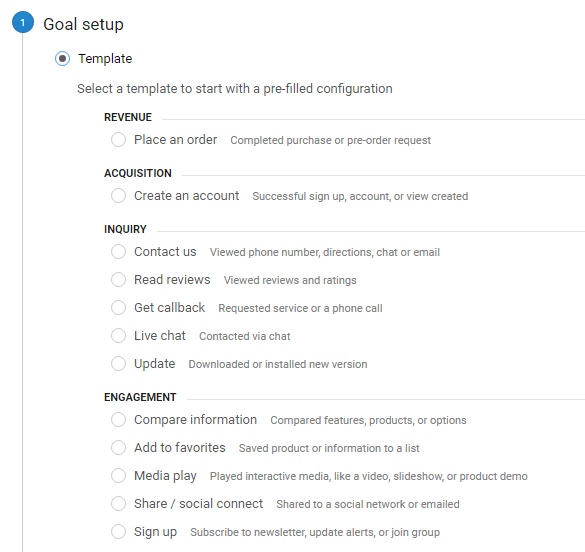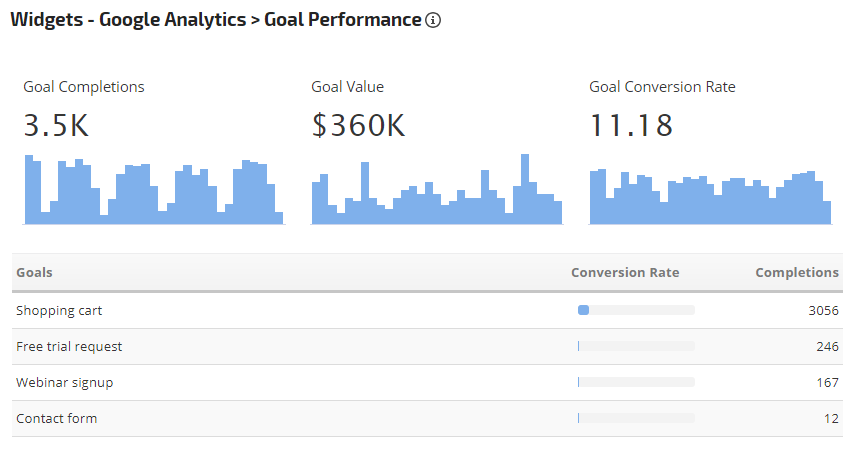What Data Is Google Analytics Goals Unable to Track and Why
Debunking Google Analytics Limitations: Discover What Data Goals Can not Track
In the world of electronic analytics, Google Analytics stands as an effective tool that offers important insights into internet site efficiency and individual habits. Among its capacities, there exist restrictions that usually go undetected. Comprehending what Google Analytics can not track is essential for a comprehensive understanding of information interpretation and decision-making procedures. From the details of individual interaction with vibrant web content to the complexities of cross-device individual trips, these constraints clarified locations that might continue to be covered from typical analytics point of views. By unraveling these constraints, a more clear picture emerges, permitting more educated techniques and fine-tuned insights right into individual interaction and conversions.

Individual Communication With Dynamic Content
User interaction with vibrant web content plays an essential role in comprehending individual habits on internet sites and optimizing the overall user experience. By tracking individual interactions with dynamic material, site owners can get useful understandings right into user interaction, choices, and behaviors - what data is google analytics goals unable to track.
Google Analytics supplies numerous devices to track individual communications with dynamic content, such as event monitoring and digital pageviews. Occasion tracking permits you to check details customer activities, like clicking a button or watching a video clip, giving information on exactly how individuals interact with vibrant components. Online pageviews can be made use of to track interactions that do not result in a new web page tons, offering an extensive view of customer interaction with dynamic web content. By assessing this data, website proprietors can make enlightened decisions to boost individual experience and drive conversions.
Cross-Device Customer Journeys
Exactly how can modern analytics devices track the complex courses users take across numerous gadgets in their online trips? Cross-device user trips present a substantial obstacle for tracking and analyzing customer behavior accurately. As users connect with applications or websites utilizing various devices such as mobile phones, desktops, and tablet computers, it comes to be vital to understand how they relocate in between these platforms to enhance customer experience effectively.
Google Analytics faces limitations in tracking cross-device user journeys due to privacy issues and technical constraints - what data is google analytics goals unable to track. While it can offer insights into individual gadgets' interactions, tracking a seamless customer trip throughout several gadgets stays a challenge. This limitation can cause insufficient information and fragmented individual understandings, making it difficult for businesses to develop a unified sight of the client journey
To address this concern, businesses can use sophisticated analytics tools that provide cross-device tracking capacities, enabling them to acquire a much more all natural understanding of individual actions. By leveraging these devices, businesses can bridge the space in tracking cross-device individual trips and enhance their digital approaches for a seamless customer experience.
Offline Conversions and Attribution
As businesses browse the difficulties of tracking cross-device individual journeys, an additional essential aspect to take into consideration is the world of offline conversions and attribution in the world of data analytics. While Google Analytics gives useful insights right into online customer habits, it falls short when it comes to tracking conversions that happen offline. This limitation presents a significant obstacle for services that have both online and offline sales channels.
Offline conversions, such as purchases made in physical shops or through telephone call centers, are crucial to comprehending the full client trip. Without the ability to associate these offline conversions to specific on the internet interactions, businesses might struggle to precisely determine the influence of important source their digital advertising hop over to these guys and marketing efforts.
To address this space, services can explore alternate solutions such as incorporating CRM systems with online analytics tools or using one-of-a-kind promotion codes that can be traced back to on-line projects. By bridging the gap in between online and offline data, businesses can obtain a more extensive understanding of their clients' actions and boost their overall marketing strategies.
Person Individual Identification
In the world of data analytics, the ability to accurately determine individual customers throughout numerous on-line touchpoints is a vital difficulty for organizations looking for to individualize and maximize their marketing strategies. While Google Analytics offers important insights into user behavior and interactions, it falls short in allowing the identification of particular individuals due to privacy concerns and technical restrictions. Google Analytics utilizes special identifiers such as cookies to track individual sessions and habits, but these do not equate to identifying specific customers in an individual sense.

Information From Secure Pages
Regardless of the increasing frequency of protected web pages on web sites, getting data from these encrypted sources offers a special challenge for electronic analytics systems like Google Analytics. Secure pages, indicated by HTTPS in the link, encrypt information traded between the customer's internet browser and the web site's web server to guarantee personal privacy and protection. try this website While this security is vital for protecting delicate details, it also poses restrictions for tracking user behavior and event analytics information.
Google Analytics faces barriers in accumulating in-depth details from secure pages due to the security procedures in position. As a result, certain data factors such as referral resources, keyword searches, and also some individual interactions might not be completely recorded when individuals access a website via a secure connection. This restriction can influence the precision and completeness of the data analysis, leading to spaces in comprehending individual behavior and preferences on safe pages.
To navigate this obstacle, digital experts may need to explore alternate tracking techniques or utilize other devices especially developed to collect understandings from safe and secure pages. By adjusting methods to fit these constraints, companies can still acquire important analytics in spite of the restraints provided by encrypted links.
Final Thought
Finally, Google Analytics has limitations in tracking user interaction with vibrant content, cross-device user journeys, offline conversions, private customer identification, and data from secure web pages. These limitations hinder an extensive understanding of individual habits and might cause gaps in data evaluation. In spite of its useful insights, Google Analytics might not give a total photo of customer involvement across different touchpoints. It is crucial for services to be knowledgeable about these restrictions and think about supplemental tools for a more holistic sight of their information.
User communication with dynamic content plays a critical role in recognizing customer habits on sites and maximizing the general customer experience. By tracking user communications with dynamic web content, site owners can gain valuable understandings into customer involvement, preferences, and habits.
Google Analytics uses one-of-a-kind identifiers such as cookies to track individual sessions and behavior, however these do not equate to recognizing individual customers in a personal feeling.
As a result, certain information points such as reference resources, keyword searches, and even some user communications may not be fully recorded when customers access a web site through a safe connection.In verdict, Google Analytics has constraints in tracking individual communication with dynamic material, cross-device individual journeys, offline conversions, specific customer identification, and data from secure web pages.